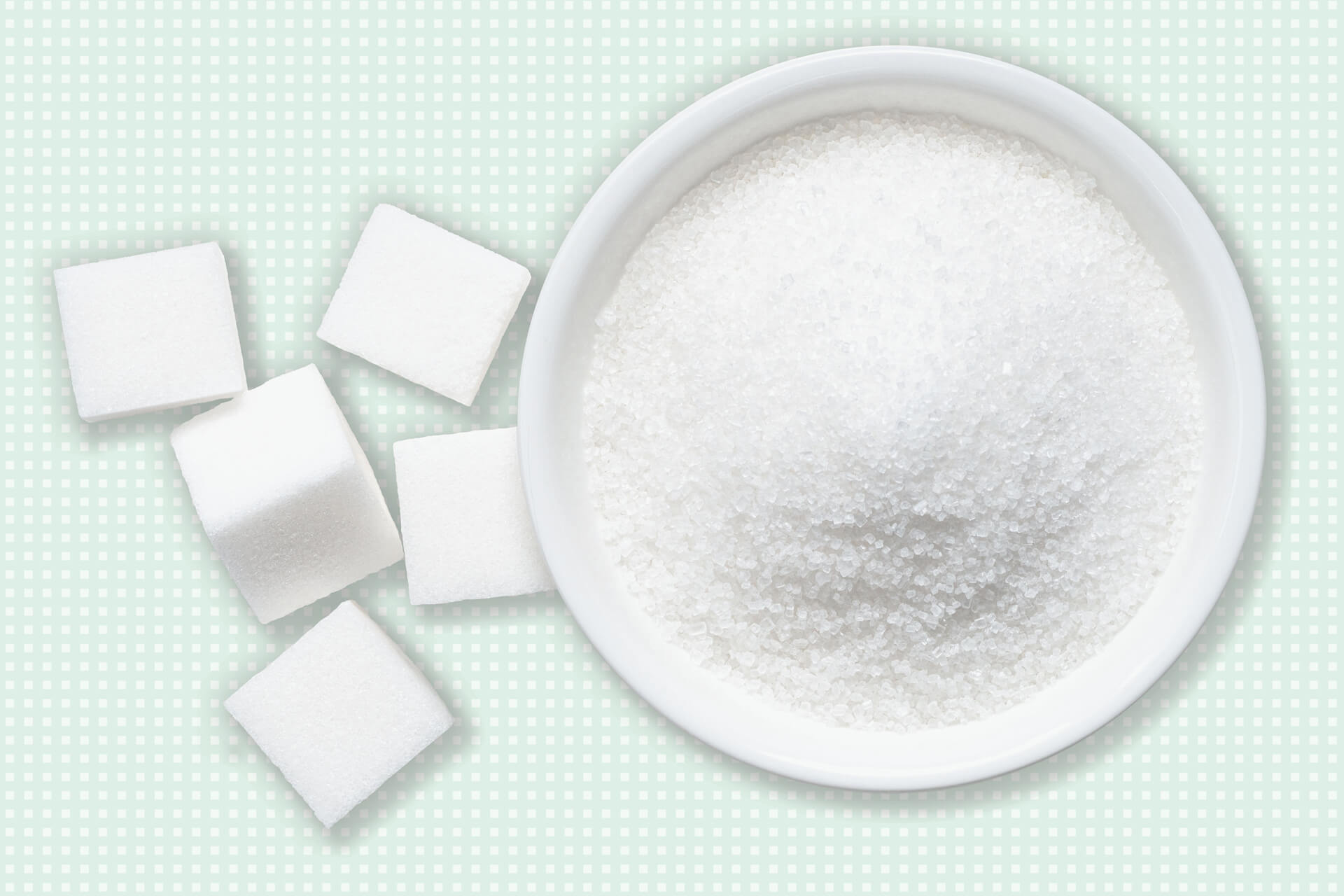
Sugar is a popular topic. You’ve probably heard Americans eat too much of it, how that leads to tooth decay and other health issues and even how it affects children’s behavior. You might hear friends say, “that pasta has too much sugar”, or your mom say, “my blood sugar is high.”
Simply put, sugar is a general term for a sweet tasting substance that dissolves in water. We most often think of sugar as table sugar, the white crystals you might use in a cookie or cake recipe. But sugar can describe many different things in our food.
Imagine links to a chain. The links can be the same or different. One “link” of sugar is called a simple sugar. Examples of simple sugars (also called monosaccharides) are glucose, fructose and galactose. Fructose is the sugar that naturally sweetens fruit and fruit juice. Glucose is what your brain and muscles use for energy.
If you put two sugar links together, you get a compound sugar (also called disaccharide). Examples of compound sugars include:
Lactose (the type of sugar in milk, breastmilk and some dairy products) is made of glucose and galactose. If someone has lactose intolerance, they are missing the enzyme to break down lactose into its smaller sugar parts.
Sucrose, or table sugar, is made up of glucose and fructose. Sucrose can be made from sugar cane or sugar beets. The confusion comes in here because we call sucrose sugar but “sugar” also describes other sweeteners.
Honey, made by bees from the nectar of flowers, is a combination of glucose and fructose.
If you put long chains of sugars together, they form starch,
also found in plants. Corn syrup is made from converting corn
starch into its simple sugars. Grains like oats, wheat and rye
also contain starch.
Simply put, sugar is a general term for a sweet tasting substance that dissolves in water. We most often think of sugar as table sugar, the white crystals you might use in a cookie or cake recipe. But sugar can describe many different things in our food.
Imagine links to a chain. The links can be the same or different. One “link” of sugar is called a simple sugar. Examples of simple sugars (also called monosaccharides) are glucose, fructose and galactose. Fructose is the sugar that naturally sweetens fruit and fruit juice. Glucose is what your brain and muscles use for energy.
If you put two sugar links together, you get a compound sugar (also called disaccharide). Examples of compound sugars include:
Lactose (the type of sugar in milk, breastmilk and some dairy products) is made of glucose and galactose. If someone has lactose intolerance, they are missing the enzyme to break down lactose into its smaller sugar parts.
Sucrose, or table sugar, is made up of glucose and fructose. Sucrose can be made from sugar cane or sugar beets. The confusion comes in here because we call sucrose sugar but “sugar” also describes other sweeteners.
Honey, made by bees from the nectar of flowers, is a combination of glucose and fructose.
If you put long chains of sugars together, they form starch,
also found in plants. Corn syrup is made from converting corn
starch into its simple sugars. Grains like oats, wheat and rye
also contain starch.

Serving Size: 1 cup
Calories: 110
Dietary Fiber: 0g
Total carbohydrates include fiber, sugar and sugar alcohols.
Serving Size: 1 cup
Calories: 170
Dietary Fiber: 1g
Natural sugar from lactose is 11g; 28-17
Sugar alcohols are another type of sweetener and their name often ends in “ol”. Examples include sorbitol, xylitol, maltitol, mannitol, erythritol and isomalt. Sugar alcohols are often found in sugarfree gums, some candies, and sugar-free chocolate. They can have 25-50% fewer calories than sugar and don’t raise blood sugar as much as table sugar does. Sugar alcohols are broken down differently in the body and (except for erythritol) can cause gas and have a laxative effect in large amounts! Tummy symptoms can start after eating about 10-20g of sugar alcohols.
While your body needs glucose for energy, too much sugar has been linked with health problems. Dr. Frank Hu, professor of nutrition at the Harvard T.H. Chan School of Public Health is quoted as saying, “The effects of added sugar intake — higher blood pressure, inflammation, weight gain, diabetes, and fatty liver disease — are all linked to an increased risk for heart attack and stroke.”
The American Heart Association suggests limiting added sugar each day to no more than 6 teaspoons for women and no more than 9 teaspoons for men. This includes all types of sugars and sweeteners that contain calories.
When it comes to better food choices, generally the less
processed, the better.
Table sugar has about 45 calories per tablespoon.
If possible, opt for natural, less processed sugars like
molasses, brown sugar, and honey.
Natural sweeteners have a few more calories, but less can be used due to their sweetening power.
While agave syrup or nectar is often labeled as healthier
than sugar, its high fructose content could be a problem if
you eat a lot of it.
https://en.wikipedia.org/wiki/Maltitol
Quote from Dr. Hu: https://www.health.harvard.edu/heart-health/the-sweet-danger-of-sugar
Chocolate Milk–Sprouts brand; Regular 1% milk: Great value brand; walmart.com
61 Names for sugar; Ohio State University; https://fcs.osu.edu/sites/fcs/files/imce/PDFs/Sixty_One_Names_Sugar_handout.pdf